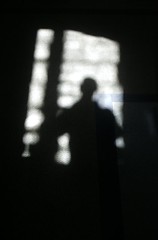turpis et periculosa
Introduced into the courtroom, the accused underwent an initial interrogation. After the first hesitations or contradictions, or even only because he declared himself innocent, the judge ordered the application of torture. The accused was spread out on his back on the rack (cavalletto in Italian or eculeus in Latin, meaning little horse, which relates to the German for torture, Folter, deriving from Fohlen, "colt"), with arms extended backward and upward, and hands tied with a cord that passed through a pulley, in such a way that the executioner (quaestionarius, tortor) could pull the cord and cause the dislocation of the collarbone. This first stage, from which the name "torture" derives (from torqueo, "to torque or twist until shattering"), was usually followed by flogging, as well as laceration with iron hooks and harrows. The dogged search for truth was such that the torture could be prolonged for several days, until the confession was finally obtained. (G. Agamben, "K." in: Nudities, Stanford, 2011, p.26) || Es ist ein auffälliger und allgemein bemerkter Zug im Verhalten der Paranoiker, dass sie den kleinen, sonst von uns vernachlässigten Details im Benehmen der anderen die grösste Bedeutung beilegen, dieselben ausdeuten und zur Grundlage weitgehender Schlüsse machen. Der letzte Paranoiker z. B., den ich gesehen habe, schloss auf ein allgemeines Einverständnis in seiner Umgebung, weil die Leute bei seiner Abreise auf dem Bahnhof eine gewisse Bewegung mit der einen Hand gemacht hatten. Ein anderer hat die Art notiert, wie die Leute auf der Strasse gehen, mit den Spazierstöcken fuchteln u. dgl. (S. Freud, Zur Psychopathologie des Alltagslebens (Über Vergessen, Versprechen, Vergreifen, Aberglaube und Irrtum: link)


<< Home